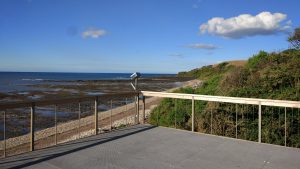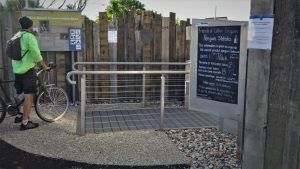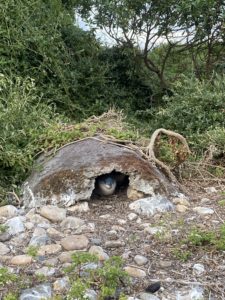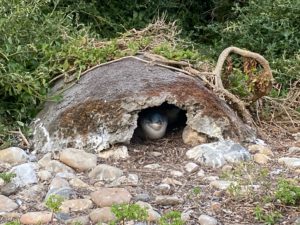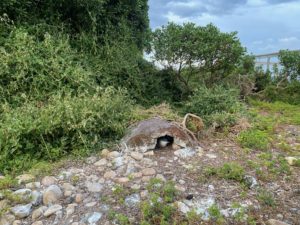Friends of Lillico Penguins
Throughout the penguins’ breeding season, from late September to early the following April, we assist the Parks and Wildlife Service to supervise the visitors to the Penguin viewing platform. We interpret the wildlife through talks, question and answer sessions as well as recording counts of visitors and wildlife.
Branch Files
- Little Penguin Brochure - Information on the Little Penguin (Eudyptula minor) published by the Department of Primary Industries, Parks, Water and Environment
Where we work
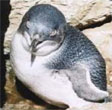 The Lillico Beach Conservation Area is located 6 km west of Devonport alongside the eastbound carriageway of the Bass Highway. It is a long narrow reserve, 2.5km long and 14 hectares in size, mainly a shingle terrace with an interesting low-tide ‘beach’ consisting of an eroded basalt platform with many rock pools. Lillico Beach is a very important wildlife corridor allowing movement between bushland on the Don River and the Forth River.
The Lillico Beach Conservation Area is located 6 km west of Devonport alongside the eastbound carriageway of the Bass Highway. It is a long narrow reserve, 2.5km long and 14 hectares in size, mainly a shingle terrace with an interesting low-tide ‘beach’ consisting of an eroded basalt platform with many rock pools. Lillico Beach is a very important wildlife corridor allowing movement between bushland on the Don River and the Forth River.
The best time to arrive is just after sunset. Wear warm, dark clothing and please do not use white lights or flash photography on the platform. Please also note there is no toilet at the platform; the nearest public toilets are at Turners Beach.
A blackboard at the site gives daily statistics during the guiding season, and signs provide much more information.
Many shore and sea birds, such as Pied Oystercatchers, Red-capped Plovers, Pelicans, Pacific Gulls, Sea Eagles and of course the Little Penguins and Shearwaters and land birds, such as the Native Hen (endemic to Tasmania) and the magnificent Swamp Harrier which spends Spring and Summer in Tasmania to breed, are seen in the reserve.
Ringtail and Brushtail possums, Pademelons, Tiger snakes and Bandicoots are common.
A steel mesh fence prevents the Penguins straying onto the highway. The Parks and Wildlife Little Penguin information brochure is available at www.folp.info, where you will also find it translated in most common languages. For more information check out the Parks and Wildlife webpage www.parks.tas.gov.au.
What we do
Throughout the penguins’ breeding season, from late September to early the following April, we are the only group of volunteers assisting the Parks and Wildlife Service to supervise the visitors to the Penguin viewing platform . We interpret the wildlife through talks, question and answer sessions, handing out fact sheets and so on. We also watch out for breaches of the National Parks and Wildlife Regulations and report them to the Rangers and/or Tasmania Police. We report each night on the numbers of visitors, penguins and other wildlife.
Mainly during the non-breeding season we have working bees to remove rubbish, eradicate or contain weeds and replant or control local vegetation.
We also ensure, with the cooperation of the Department of Infrastructure Energy and Resources, that the adjacent roadside is cleaned up at least annually. Of particular concern are plastics and other rubbish that inevitably ends up in the ocean and along the coast—potentially causing problems for wildlife.
Every four years Friends of Lillico Penguins has performed a penguin count along the entire colony.
New members who have the confidence to talk to fairly large groups of visitors are always welcome members. Training is provided. Hopefully you would be able to make a commitment to work a particular night on the roster on a regular basis. Members who operate on the Roster are eligible for a WILDCARE vest under the volunteer recognition scheme.
Also very welcome are people who prefer not to be guides but are willing to help in the equally important work of conserving the penguins’ habitat
Guiding recommenced in October 2018 and will continue until approximately the end of March 2019.
Our Contacts
For further direct information about our group:
Contact person: Sally McMillan
